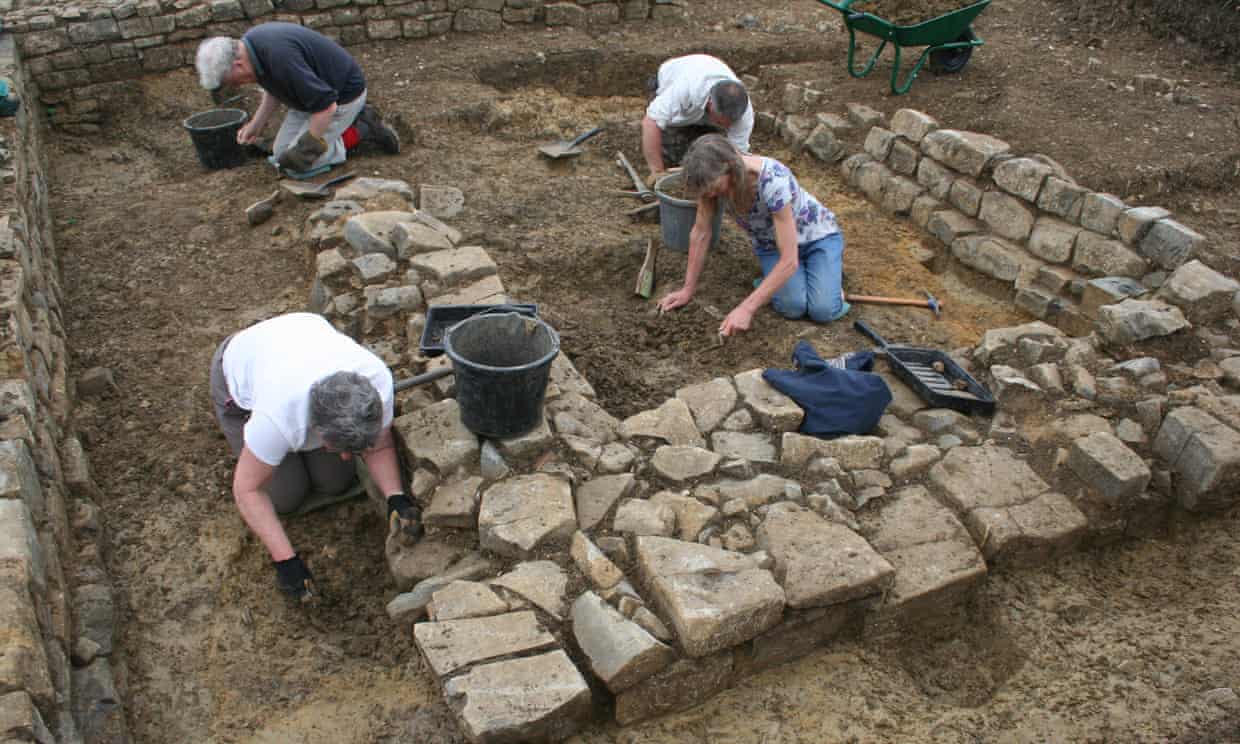Still discovering. Still Learning.
Viking Archeology Blog
Sunday, 11 December 2016
Viking gold discovered in Denmark – on live TV
The
new find was made in the same field that yielded these seven bracelets
over the summer. Photo: Nick Schaadt, Museet på Sønderskov
A team of
Danish archaeologists digging in a field east of Ribe knew they had a
better-than-average chance of discovering a treasure trove.
They were, after all, digging in the same field that back in June produced the largest ever discovery of Viking gold in Denmark.
Having discovered seven bracelets, six gold and one silver, that date
to around the year 900 the archaeologists went back to the field on
Monday.
This time they had a production crew from regional broadcaster TV Syd in tow.
Already by
midday, the archaeologists and the TV crew had cause to celebrate. In
front of rolling cameras, the excited diggers pulled out what appeared
to be part of another Viking gold bracelet.
Rare 1,500 Year Old Odin Amulet Found In Denmark
A local treasure hunter named Carsten Helm, along with his 10 and 12-year-old sons, discovered a trove of gold on the island of Lolland that dates back 1,500 years.
The Odin amulet was called a "rare and exciting discovery"
[Credit: Museum Lolland-Falster]
Among the gold discovered was a so-called bracteate, a thin gold medallion worn as jewellery during the Germanic Iron Age. Archaeologists at Museum Lolland-Falster believe that the image on the amulet depicts Nordic god Odin. Their conclusion was based on other finds of similar bracteates that include a rune inscription reading ‘The High One’, one of Odin’s nicknames.
“It is a very exciting find,” museum spokeswoman Marie Brinch said. “Even though it is a previously-known type, it is a rare and exciting discovery. Throughout history there have only been three found on Lolland, the latest in 1906, and in all of Northern Europe there are only around 1,000 of them.”
Helm and his sons also found an additional gold pendant, three gold pieces that were likely parts of a necklace, a gold ring and assorted pieces of silver.
Their finds will go on display at the Maribo County Museum on Friday.
Read the rest of this article...
Tuesday, 6 December 2016
Somerset skeletons are oldest evidence of monks found in UK
Carbon dating of remains unearthed in Beckery chapel near Glastonbury indicate monastic life dating back to fifth or early sixth centuries
Skeletons excavated at a site near Glastonbury are the oldest examples of monks ever found in the UK, carbon dating has proved.
The remains,
unearthed at the medieval Beckery chapel in Somerset, said to have been
visited by legendary figures such as King Arthur and St Bridget,
indicate a monastic cemetery dating back to the fifth or early sixth
centuries AD, before Somerset was conquered by the Saxon kings of Wessex
in the seventh century.
Archaeologists
first located an extensive cemetery of between 50 and 60 bodies during
an excavation in the 1960s. The fact all were male – apart from one
female, thought to have been a visitor, nun or patron, and two
juveniles, who may have been novices – left little doubt this was a
monastic graveyard.
Read the rest of this article...



